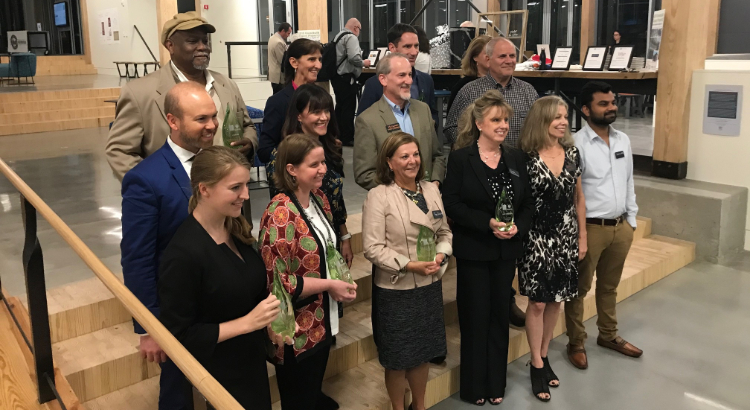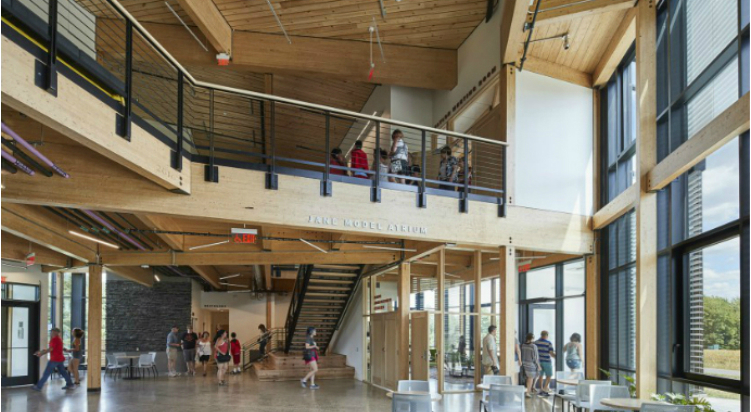
John McFarland is donor’s representative for the Living Building at Georgia Tech. After graduating from Rensselaer Polytechnic Institute, he returned to his hometown to get a masters in mechanical engineering at Georgia Tech. In 2002, he joined Working Buildings LLC and, in 2005, he became a partner at the firm. He also spearheaded the development of WorkingBuilding’s highly successful CxAlloy commissioning software. In 2006, Building Design and Construction magazine named McFarland one of “40 Under 40 AEC Industry Rising Stars.” As donor’s rep he serves as Kendeda’s voice on the design team, and as liaison between the donor and Georgia Tech.
McFarland is donor’s representative for the Living Building at Georgia Tech. After graduating from Rensselaer Polytechnic Institute, he returned to his hometown to get a masters in mechanical engineering at Georgia Tech. In 2002, he joined Working Buildings LLC and, in 2005, he became a partner at the firm. He also spearheaded the development of WorkingBuilding’s highly successful CxAlloy commissioning software. In 2006, Building Design and Construction magazine named McFarland one of “40 Under 40 AEC Industry Rising Stars.” As donor’s rep he serves as Kendeda’s voice on the design team, and as liaison between the donor and Georgia Tech.
Why’s sustainability such a big focus for you? I’ve always been focused on sustainability. Even when I was a kid, I saw it as an efficiency thing. In my college [entrance] essay, I focused on wanting to study engineering to learn how to do more with less. … There’s a whole view of engineering that it’s all about harnessing nature. But engineering is really about solving problems. Air conditioning solved a problem, but when it used a lot of energy, it created another problem. Now, we’re figuring out ways to solve that problem. … It’s that whole idea that by making things work in the most efficient way possible you can solve problems without creating new ones that’s always attracted me.
How does the Living Building differ from other high-performance buildings on which you’ve worked? There’s a realization on the part of the project team that it’s not a given. I’d say that’s the fundamental difference from the Living Building team and those pursuing some other metric. Plus, there’s not really a choice because the Imperatives are exactly tha — imperatives. You’ve got to achieve them. So you have to take the attitude that, ‘we’ll figure this out.’ There’s a fundamental sense that we’ve got to give each decision with this building a lot of thought.
Which of the Tech building’s features are most likely to become popular in the Southeast? While we get a lot rain here in the Southeast, water is still a finite resource. We’ve come close to running out of it here in Atlanta and the price of water has certainly gone up a lot. So I think the Water Petal — or similar kinds of things for buildings that aren’t trying to get certification — is bound to become more popular among commercial projects in the Southeast, particularly in Atlanta. We’re working on a developer-built high-rise commercial office building in Midtown (Atlanta). The developer understands that City of Atlanta water rates are only going to keep going up. So that building will effectively be net positive — except for water that’s going to be consumed by people. They want to be as independent as possible from the water system. … So more than anything, water’s going to be the slam dunk. Energy’s going to be more difficult, because we suffer or benefit, depending upon your perspective, from low power rates, so solar’s going to be a hard sell on a purely economic basis. I would like to think some of the land-use practices will also spread — not just native plants, which is pretty accepted nowadays, but edible landscapes where people can eat off the land, and the landscapes don’t need a lot of irrigation or intensive cultivation.”
I’m surprised that you’re not so mentioning materials? To be honest, I don’t hear a lot of people talking about the [Materials Petal] Red List outside of the Living Building Challenge. That’s a tough one, particularly because you have influential industries that don’t want to put limits on or disclose the chemicals that are put in building products. On the other hand, we may see a lot of interest in wood construction and not just in low-rises. It’s really clear that using wood could have a lot of impact on sequestering carbon dioxide from the atmosphere. Where we can demonstrate that wood can be used in lieu of steel or concrete, it makes a lot of sense, particularly in the Southeast.


